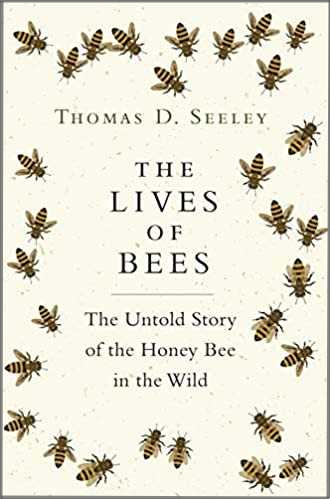Is Cuprinol Safe For Bees? And What About Creosote?
On my page about painting beehives, I include a number of suggestions for coatings beekeepers can use, which are safe for bees and will protect the outer wood.
However, beekeepers who have a tin of Creosote or Cuprinol kicking around in their garage or shed, may be thinking it would be a shame to see it go to waste, and wonder: is Cuprinol / Creosote something I can use to coat my beehive?
Why Cuprinol And Creosote Are Not Appropriate For Bees
Sometimes the best resources in answering questions are the official resources actually stored with government agencies. These resources enable you to circumvent manufacturer marketing departments, and make up your own mind based on the factual information provided, all from the comfort of your armchair. You don't even have to go to the store to check labels.

Cuprinol And Bees
EPA Government documentation states
"This is the Wood Preservative which is world famous among boat owners, it prolongs the life of all wood by protecting against rot, termite damage, mildew, warping and swelling. Cuprinol® No. 10 Green Preservative contains a powerful copper fungicide-insecticide and water repellents for three-way protection."
It is surely relevant to consider the 'insecticide' properties, and it is worth remembering that termites along with bees, are superorganisms.
Both are, of course, insects.
Using the Cuprinol may save you the expense of purchasing additional paint, but anything used that might be detrimental to the health of your bees, would surely be a false economy.
As stated, there are bee-friendly, safe ways to paint, coat and protect your beehives, including mixtures made with bee products.
Creosote And Bees
Again, from the EPA government website:
"Creosote is derived from the distillation of tar from wood or coal and is used as a wood preservative. Pesticide products containing creosote as the active ingredient are used to protect wood used outdoors (such as railroad ties and utility poles) against termites, fungi, mites and other pests."......
"Creosote is currently undergoing registration review, a process EPA conducts for all pesticides every 15 years to ensure that products can carry out their intended function without creating unreasonable risks to human health and the environment. In its Proposed Interim Decision (PID), EPA proposed additional mitigation measures to protect workers who apply creosote."
The above paragraphs should surely be sufficient to dissuade any conscientious beekeeper that using creosote to paint beehives is a bad idea.
I'll finish with a quote from beekeeper, *Phil Chandler:
"I prefer not to put anything onto or into the hive that I would not be willing to put on my skin, so I use a bee-friendly coating."
- (See bee hive plans)
He has a point, don't you think?
*Phil Chandler is the author of The Barefoot Beekeeper
If you found this page helpful or interesting, I'd really be grateful if you would share it with others - if not this page, perhaps another, such as Gardening For Bees.
Thank you so much :) .
